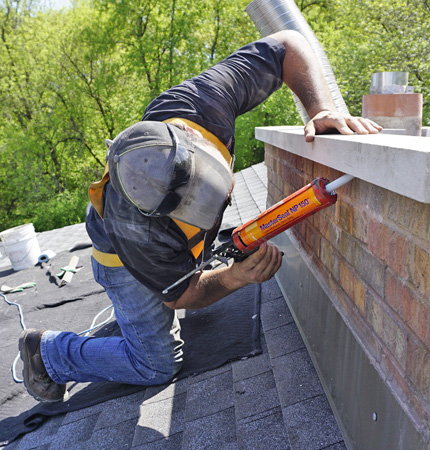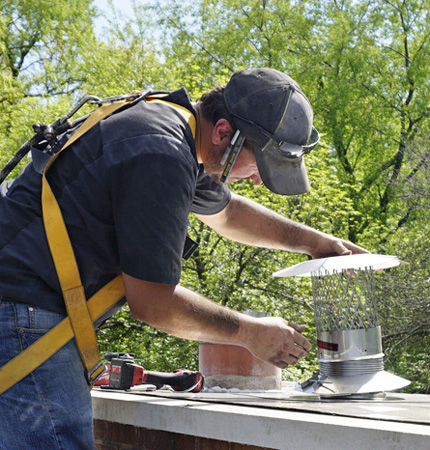Freezing Temperatures Can Damage Your Chimney
Large potholes and cracked sidewalks in the spring demonstrate the big impact that freezing temperatures can have on masonry materials. The bricks and mortar of your chimney can be impacted in a similar way. You have the power to prevent this type of damage from freezing temperatures to your chimney.
 How the cold affects a chimney
How the cold affects a chimney
Masonry materials—such as bricks, mortar and cement—are incredibly porous. When it rains, sleets or snows, the masonry material can absorb that moisture like a sponge. As the moisture freezes and thaws during the winter, it expands and contracts inside the material. This process of expanding and contracting it was what breaks down cement, bricks and mortar causing it to crack or chip.
When moisture gets inside a chimney and seeps into the chimney liner, it can cause the liner to break or crack creating a pathway for carbon monoxide to get into your house. It also increases the risk of a house fire because hot embers may be able to escape the chimney through the crack and ignite nearby combustible materials. When water seeps into the exterior masonry on the chimney,
it can lose its structural integrity and begin to lean or collapse.
How to prevent winter water damage
There are 3 ways that you can prevent winter water damage.
1. Have the chimney’s masonry water proofed.
The first line of defense against water damage for a chimney is a waterproofing sealant. The waterproofing sealant acts as a protective layer over the masonry stopping it from absorbing water. Sealants designed for chimneys are 100% vapor permeable which means that they do allow water vapors from the smoke to evaporate out of the chimney but stop the masonry from absorbing external water. Most sealant treatments come with a 5 to 10-year warranty.
2. Install a chimney cap and ensure the crown is not damaged.
Installing a chimney cap is the best way to protect the inside of the chimney from water damage. It acts like an umbrella, sitting on the top of the chimney, preventing precipitation from falling down the chimney. Instead, the precipitation runs down the side of the chimney cap. When you have the cap installed, the chimney cap installer should also check to make sure that the chimney crown (or cement cap around the mouth of the chimney) does not have any cracks that could be allowing water to seep into the chimney’s masonry. If the chimney crown is cracked, it should be repaired or replaced.

3. Schedule a chimney inspection.
There are many benefits of scheduling an annual chimney inspection by a certified chimney sweep technician. One of the most important is that they can spot damage in your chimney and identify the root cause. Water intrusion is the most common problem with chimneys. The sooner the problem is caught, the more likely it is that the repair costs will be minor. Even if you have already had your chimney cleaned and inspected this year, you should call on a chimney experts, like the Original Chimney Specialist, if your notice any of the signs of water damage: broken chimney flue tiles in your fireplace, water stains on a wall or ceiling near the fireplace, a rusted fireplace grate or chimney damper, crumbling mortar or loose bricks.
Is your chimney protected against freezing temperatures? If your chimney needs a new coat of waterproof sealant, a chimney cap installed or a chimney inspection, give us a call!







